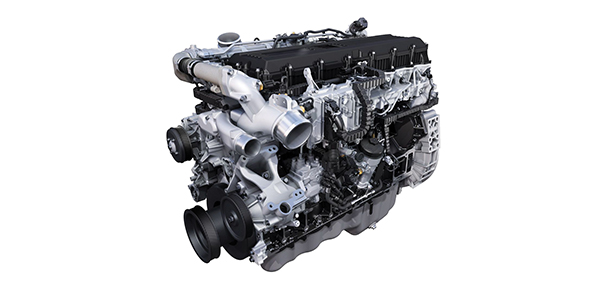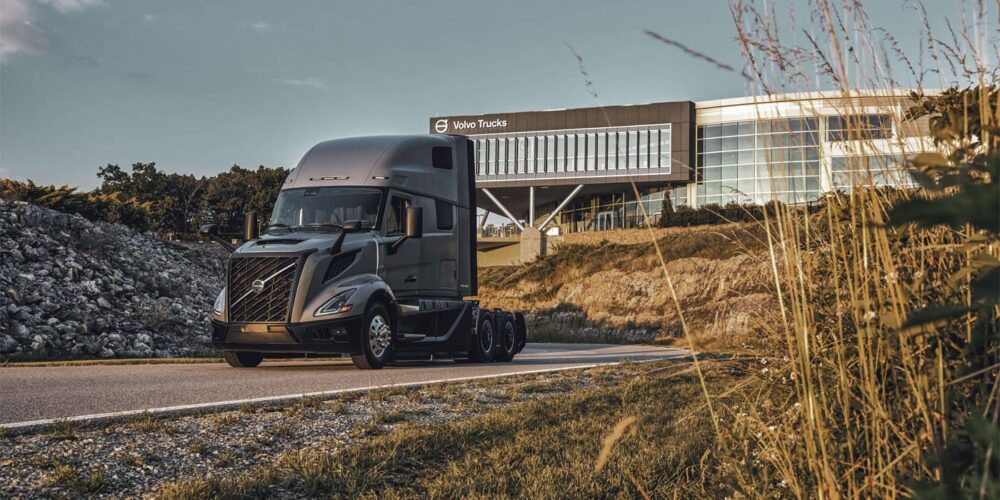With each passing year, the capabilities of data-driven fleet solutions have grown and so too has the importance of understanding those capabilities and what they mean, both to you and those you work with. This year, things are at a head. Truck data is no longer something whose importance will be most felt in the future. It’s happening now. That is why Fleet Equipment has named telematics and data our 2018 Equipment Trend of the Year.
Keep reading and you’ll see how data usage has grown this year—pushing telematics solution even further, making them more user-friendly—as well as trends that stand to grow next year and beyond. Once you’re done with that, our issue is packed with data-related insight. But we’re getting ahead of ourselves. Let’s take a look at the growing data usage trends.
Part I: Data trends in 2018 and beyond
➊ Over-the-air updates
If you have a 2017 model year or newer engine from one of the engine OEMs that offers the service— Cummins, Detroit, International and Volvo—you have the capability to receive over-the-air updates for those engines. Simply put, over-the-air updates do exactly what the name implies, updating the engine’s software over the cellular network. This saves you the need to have the truck down for hours or days, waiting for new software, as the updates can be scheduled on the truck’s schedule—when the driver is on a break or is done for the day, for example, which can cut the downtime involved from days to hours or even minutes. They also give you the ability to change various operational parameters on the fly—speed limiters, for example.
It’s comparable to the way a smartphone or laptop updates—you’ll see a pop-up notification come up, telling you there’s an update and asking whether you want to install it now or schedule a time later. This way, the update isn’t disrupting time during which you might need that computer or phone (or truck, in this case), especially if the problem isn’t urgent.
There are typically two types of parameters that can be updated. The first are software updates pushed from the OEMs, which can include improvements of operational efficiency to reduce triggered faults. Oftentimes, these updates are prompted by issues that have bubbled up to the surface with engines working on today’s roads. By updating the engine in a timely manner, the fleet can potentially avoid unplanned downtime and engine issues that require service.
The second type of parameters that can be updated are set by you, the fleet, typically at the time of purchase. If they’re still working for you once your new trucks have spent some time on the road, then there’s no need to touch them; but if not, you have the ability to update them over the air at any time. These parameters can include max vehicle speed limit, cruise control set speed, idle shutdown timer and idle shutdown by ambient temp or temperature.
It’s important to note that not all engine manufacturers offer the same capabilities, so you’ll want to talk with your engine OEM to ensure that you’re aware of what’s capable today and what might be coming down the line tomorrow.
➋ Trailer tracking
Trailer tracking is another telematics offering that has increased in popularity. So what can trailer tracking software do for you? The answer is, to an extent: whatever you need it to. Depending on what you are looking for, trailer tracking can be limited to the location of your trailers or go as far as organizing your trailer maintenance schedule to reduce downtime. This means near-real-time location, cargo status, door status, temperature, and more.
An example of how to put trailer telematics to work is yard location. While you might be using RFID to track trailers, that only tells you if it’s in the yard, not where it is in the yard. Telematics and GPS tracking can tell you where exactly to find it. It can also help in the unfortunate case of trailer theft. Recovering one stolen trailer can practically prove the ROI right then and there. Stop verification, another trailer telematics application, will vouch for drops and pickups to ensure there are no unauthorized stops along the way, which would help identify possible theft situations. It can also help determine how long trailers dwell at customer locations or ports.
If you’re interested in this technology, talk to a telematics provider and tell them exactly what you’re looking for—whether that’s asset location, help combating trailer theft, or something else. The more specific you are about what you need, the faster you could see ROI on the solution.
➌ Routing software
The current arms race to see who can deliver goods the fastest is showing no signs of slowing down thanks to the desire for last-minute delivery from retailers offering one- and two-day shipping. It’s no surprise that routing software is becoming more prevalent as it offers delivery fleets a way to cut those precious seconds and minutes out of their routes and maximize productivity.
Routing technology combines real-time GPS data with other routing information such as traffic congestion and weather. In many cases, these are trucking-specific solutions—meaning that they factor in points that truck drivers will need to know, such as drop-off locations or roads that are difficult for an 18-wheeler to navigate. This can set these services apart from those geared toward ordinary car travel.
Some telematics companies are also integrating real-time weather data so that you can see road hazards like impending storms or fog coming. These solutions could anticipate the likelihood of experiencing weather-related delays, including whether the driver needs to be rerouted or pulled off the road entirely.
➍ Warranty tracking
Data tracking for warranty claims can be incredibly useful for fleets as well, allowing them to upgrade from paper-based tracking, which may not be entirely accurate or satisfy the warranty provider, and instead use down-to-the-letter tracking software to prove exactly when a part went on the truck and what happened to it.
This solution is specifically geared toward larger fleets with their own warranty administrator—a person who is usually overwhelmed with paperwork and documentation. The data provides them with the ability to submit claims more quickly and with more visibility into where the process is with each claim. This automated process lessens the reliance on one particular person for things to go smoothly and correctly.
Fleet Equipment covered this in-depth in our previous issue, and you can read that story here.
Part II: How rapidly advancing solutions impact data usage
Trucks are generating massive amounts of data into which fleets, OEMs and third-party suppliers have visibility. If your fleet already has a robust data and technology policy, you’ll want to revisit it from time to time to make sure it still jives with today’s latest technology. If you don’t have a policy, you need one. Consider making that your fleet management New Year’s resolution.
As new technology and software capabilities are rolled out, you should also expect your providers to notify you concerning data-usage changes. We asked a couple of truck OEMs and telematics providers how they communicate new features and updates to the agreement.
“We update the EULA periodically throughout the year. Customers are presented with the revised EULA through the portal sign-on process, as well as the application sign-on process,” says Andrew Dondlinger, Navistar’s vice president and general manager of connected services.
“EULAs are usually updated at the end of a contractual period or when system changes are made that influence the agreement. They are directly communicated to the end user in writing, by phone or in person,” says Gerry Mead, executive director of innovation for Phillips Industries.
The next thing you should look for in your EULA is what limitations there are on data usage—both by the provider and any outside companies they might work with.
“EULAs need to assert extensive liability limitations. The EULA holds harmless the licensor (provider) in the event of a catastrophic failure or accident. It also ensures that there is no unauthorized use of identified data regarding a non-disclosure agreement from either party,” Phillips’s Mead notes.
According to Navistar’s Dondlinger, the OEM has put limitations in place on the usage of data. Dondlinger says that Navistar can: use the data internally to help improve its products; use the data externally as long as the data is aggregated and anonymized; and share data with integrated partners on behalf of the vehicle (data) owner.
“There’s no limit to what you can collect and analyze to improve your business operations and reduce cost,” says Chris Ransom, director of solutions engineering at Verizon Connect. “But it’s important for businesses to make sure they are thinking about data at scale in the early days. Adding scale, increasing security or advancing business logic can become more difficult as a business grows.”
What you’ll need to decide is what data is important to your business and how that relates to the data solutions you depend upon.
For example, says Neil Cawse, chief executive officer of Geotab, in Geotab’s device, the company records diagnostic data and monitors it to see how it’s performing, whether there are bugs in the software, or if anything is happening that’s not supposed to.
“We gather all this proprietary data that really has no use to the fleet manager, but is very important for us to build and engineer better products,” he elaborates. “The same thing is going to apply to the truck OEMs. The OEMs may want to measure temperature distribution of their new engine, for example, so that they can optimize it for the next generation of engines and make it better and more reliable. This kind of data tracking doesn’t really benefit anybody except the company that engineers the product.”
One thing you’ll want to be sure you understand the use of is data that shows your truck’s location.
It’s easy to see why that is. Say your fleet has fallen behind on a few shipments. What if your competitor can purchase that information, and they can use it to lure business away from you? They can go to your clients, tell them what they know, and show them the data to prove it. It’s a compelling argument.
This, Cawse says, should be one of a fleet’s top concerns: whether the data that’s being tracked could potentially help their competitors. If you’re working with a company that is selling this information, that’s a problem.
“You have to ask these questions,” Cawse concludes. “The proactive fleet starts asking them now, and the reactive will ask them in five years.”
Fleet Equipment is here to help. Our December issue is packed with data-related stories, including:
First things first: Do you really own your trucks’ data?
You can find tips on navigating end-user license agreements here.
















